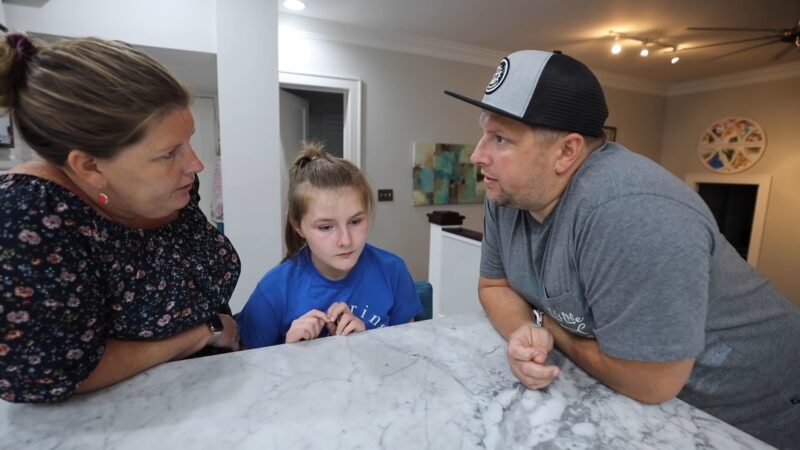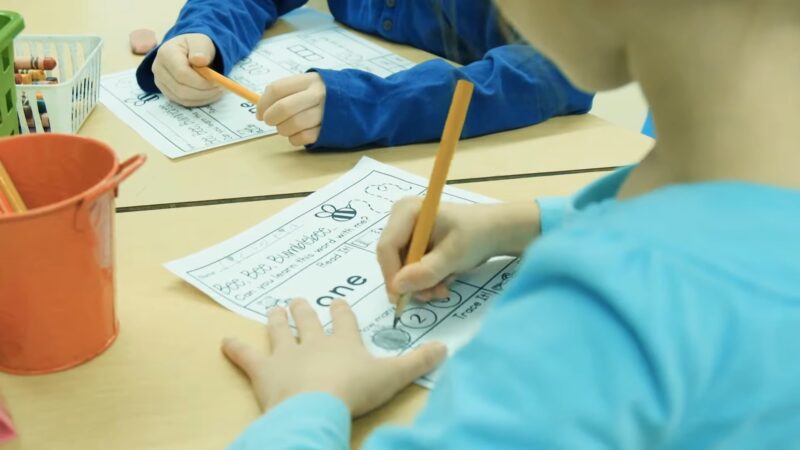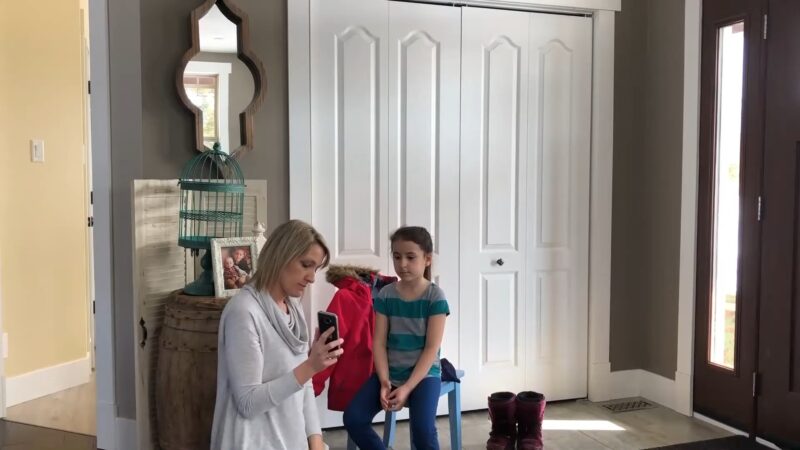Video self-modeling (VSM) has emerged as a transformative tool in supporting children with Autism Spectrum Disorder (ASD). By enabling them to observe and emulate their own positive behavior on screen, VSM offers a unique blend of visual learning and self-empowerment.
Today, we explore seven ways VSM can significantly benefit children with ASD, providing parents and educators with a valuable resource for facilitating growth and learning.
1. Enhancing Social Skills
For many children with ASD, social interactions can be challenging. VSM serves as an innovative approach to demystify these social nuances. When watching themselves successfully interact in a variety of social settings, children can learn and internalize appropriate social behaviors and cues.
Creating effective VSM content requires some technical know-how and resources, such as a camera, editing software, and a playback device.
Parents and caregivers who look to create high-quality VSM content can use the creative suite, which offers a range of user-friendly tools and features that simplify the video editing process. Ensuring access to these resources and gaining basic video editing skills are important steps in implementing VSM successfully.
Observing and Replicating Positive Interactions
Through VSM, children witness themselves engaging in positive social exchanges. This observation allows them to understand and replicate desirable behaviors, such as sharing, taking turns, and using polite language.
Seeing themselves succeed in social situations builds confidence and skills that are crucial for real-life interactions.
Long-Term Benefits and Social Confidence
Regular exposure to positive social scenarios through VSM can lead to lasting improvements in social confidence and competence. Children who use VSM as part of their learning process often show an increased willingness to engage in social activities, displaying behaviors they have learned and internalized from their self-modeled videos.
2. Improving Communication Skills
Communication is a common challenge for children with ASD. VSM helps break down these barriers by showing children engaging in clear and effective communication. Watching themselves communicate effectively can reinforce these skills and encourage more frequent verbal interactions.
Enhancing Verbal and Nonverbal Skills
VSM not only aids in developing verbal skills but also improves nonverbal communication. Children can learn to better interpret and use body language, facial expressions, and gestures, which are critical components of effective communication.
The Ripple Effect of Improved Communication
As communication skills improve through VSM, children often experience a positive ripple effect in other areas of their lives. Better communication leads to stronger relationships with peers and family members, more successful schooling experiences, and a greater sense of self-advocacy.
3. Building Independence
One of the key goals for children with ASD is to develop independence. VSM encourages this by demonstrating self-sufficient behavior. Children see themselves completing tasks independently, which motivates them to replicate these behaviors in their daily lives.
Empowering Decision-Making
VSM allows children to observe their problem-solving and decision-making skills. This empowerment helps them feel more capable and confident in making choices and taking actions independently.
Enhancing Daily Living Skills
Watching themselves successfully navigate daily tasks can be profoundly empowering for children with ASD. This modeling of daily living skills—like dressing, eating, and personal hygiene—through VSM is an effective way to enhance their independence and quality of life.
4. Reducing Problem Behaviors
VSM provides a unique perspective for children to observe their own behaviors. By seeing themselves exhibit less desirable behaviors followed by corrected, positive behaviors, they can learn to identify and modify their actions accordingly.
Positive Reinforcement through Self-Viewing
Seeing themselves succeed in managing or overcoming problem behaviors offers powerful reinforcement. This positive self-viewing encourages the repetition of desirable behaviors and gradually reduces the frequency of problem behaviors.
Long-Term Behavioral Change
Regular use of VSM can lead to significant and lasting changes in behavior. As children continue to watch and learn from their own positive examples, they internalize these behaviors, leading to long-term improvements.
5. Enhancing Academic Skills
VSM caters to the visual learning strengths of many children with ASD. By watching themselves successfully engage in academic tasks, children can better understand and retain complex concepts.
Boosting Motivation and Engagement
Seeing themselves excel in academic activities enhances children’s motivation and engagement in learning. This increased interest can lead to a more positive attitude towards school and learning in general.
Personalized Learning Experiences
VSM provides a personalized learning experience, allowing children to learn at their own pace. This tailored approach can be particularly beneficial in addressing the unique learning needs of children with ASD.
6. Encouraging Emotional Regulation
Children with ASD often struggle with understanding and regulating their emotions. VSM can help by showing them how to effectively manage their emotional responses in various situations, thus providing a model for emotional regulation.
Developing Coping Strategies
Through VSM, children can observe and learn effective coping strategies to deal with stress, frustration, and other emotions. This learning helps them to develop healthier ways to express and manage their feelings.
Building Emotional Resilience
Over time, the skills learned through VSM can contribute to greater emotional resilience. Children become better equipped to handle emotional challenges, leading to improved overall well-being.
7. Cultivating Self-Esteem and Confidence
VSM provides children with ASD the unique opportunity to see themselves succeed. This success is not just theoretical but visual and tangible, boosting their self-esteem significantly.
Overcoming Limiting Beliefs
By watching themselves overcome challenges and succeed in various tasks and interactions, children can start to overcome limiting beliefs about their abilities. This shift in perception can have a profound impact on their confidence and self-worth.
Long-Term Impact on Self-Image
The positive self-image fostered by VSM can have lasting effects. Children who see themselves in a positive light are more likely to take on new challenges, engage more with others, and pursue their goals with confidence.
Overcoming Challenges in Implementing VSM
Addressing Individual Needs
Every child with ASD is unique, and VSM should be tailored to meet their specific needs and challenges. Personalizing the content of the videos to focus on areas where the child needs the most support ensures that VSM is relevant and effective for each individual.
Technical Considerations and Resources
Creating effective VSM content requires some technical know-how and resources, such as a camera, editing software, and a playback device. Ensuring access to these resources and gaining basic video editing skills are important steps in implementing VSM successfully.
Balancing Expectations and Results
While VSM can be highly effective, it’s important to have realistic expectations. Progress may be gradual, and not all areas of development may improve at the same rate. Patience and persistence are key to seeing the long-term benefits of VSM.
Concluding Thoughts
Video self-modeling is a versatile and effective tool for supporting children with ASD. Providing opportunities for learning, growth, and self-reflection will let VSM have a profound impact on various aspects of a child’s life.
It doesn’t matter if it’s enhancing social skills, encouraging emotional regulation, or cultivating self-esteem; VSM offers a unique and empowering approach to help children with ASD reach their full potential.
Related Posts:
- How to Discipline a Child with ADHD: Expert Tips and…
- 15 Ways to Change Your Mindset and Attitude -…
- 6 Ways to Empty Your Mind if You Are Stressed Out:…
- 15 Ways To Answer "How was your day" - Spice Up Daily Chats
- Dangers of Self Diagnoses - How It Can Harm Your Health
- Can Hyperbaric Chamber Help with Anxiety and Mental…




















